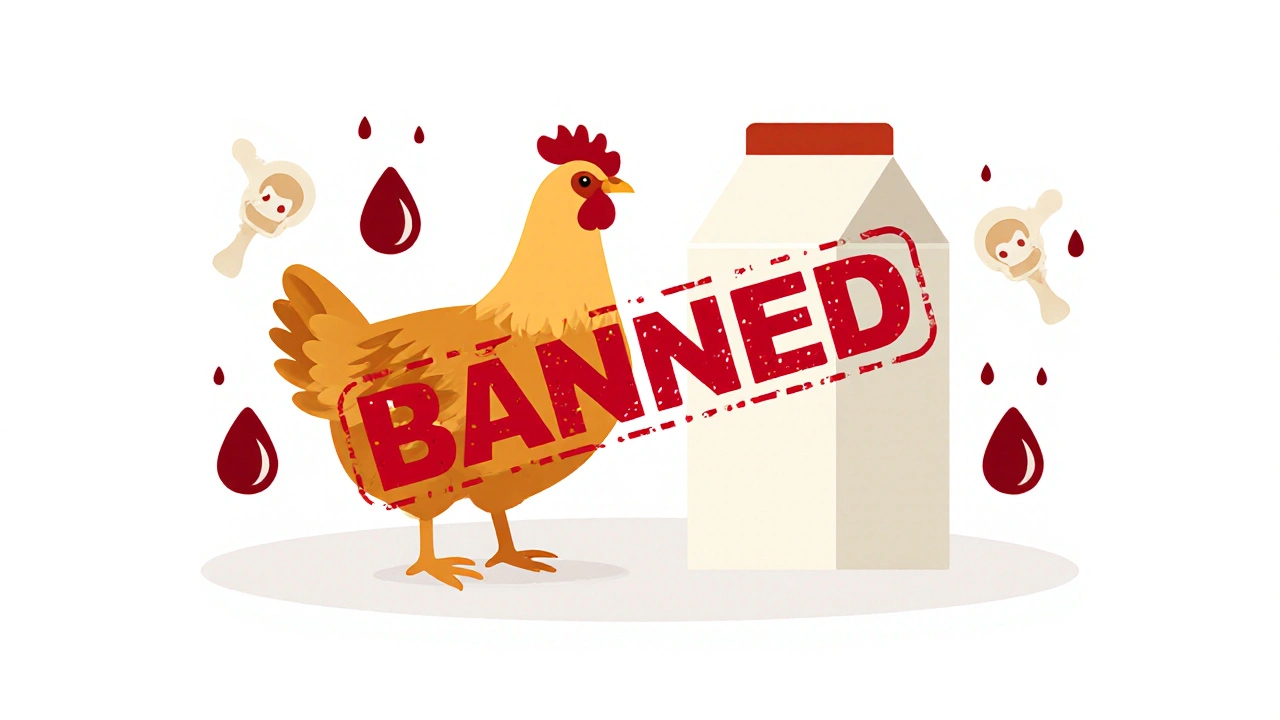
Chloramphenicol used to be a go-to antibiotic for livestock and poultry. It was cheap, effective against a wide range of bacteria, and worked fast. But today, if you find chloramphenicol in a chicken breast, a carton of milk, or a bag of pork, it’s not just a mistake-it’s illegal in most countries. Why? Because the risks far outweigh the benefits, and the consequences for human health are too serious to ignore.
What Chloramphenicol Does to Humans
Chloramphenicol isn’t just another antibiotic. It’s one of the few drugs that can cause aplastic anemia-a rare but often deadly condition where the bone marrow stops making new blood cells. This isn’t a side effect you see in 1 out of 10,000 cases. It happens unpredictably, even at tiny doses. And once it starts, there’s no cure. Bone marrow transplants are the only option, and even then, survival isn’t guaranteed.
What makes this worse is that the risk doesn’t come from taking the drug yourself. It comes from eating food from animals that were treated with it. Even trace amounts-parts per billion-can trigger the reaction in sensitive people. Studies from the 1970s, like those published by the World Health Organization, showed that people who regularly ate meat from chloramphenicol-treated animals had higher rates of blood disorders. That’s why countries started banning it in food production decades ago.
How It Gets Into the Food Supply
Chloramphenicol doesn’t disappear after treatment. It lingers in tissues-liver, kidneys, fat-and can show up in milk and eggs too. Farmers might use it to treat mastitis in cows, respiratory infections in pigs, or eye infections in poultry. Sometimes, it’s used off-label because it’s cheap and easy to get in places with weak regulations. Other times, it’s accidental: a vet prescribes it for a sick animal, and the owner doesn’t know it’s banned for food animals.
Residues can stick around for weeks. A cow treated with chloramphenicol might still have detectable levels in its milk 14 days after the last dose. That’s why withdrawal periods are critical. But here’s the problem: there’s no safe withdrawal period for chloramphenicol in food animals. Not because science hasn’t found one-but because no amount is considered safe for humans.
Global Bans and Enforcement
The United States banned chloramphenicol for use in food animals in 1991 after multiple incidents of contamination. The European Union followed with a total ban in 1994. Canada, Australia, Japan, and New Zealand all have strict zero-tolerance policies. That means if even one part per billion is detected in meat or dairy, the entire batch is destroyed. No fines. No warnings. Just scrap.
Enforcement is tight. Customs agencies test imported meat. Supermarkets do random checks. In 2023, the EU reported 12 cases of chloramphenicol in imported shrimp from Southeast Asia-all of them rejected. In New Zealand, the Ministry for Primary Industries tests over 10,000 samples a year. In 2024, they found zero chloramphenicol residues. That’s not luck. It’s because farmers know the penalty isn’t just financial-it’s reputational. One positive test can end a farm’s export license.
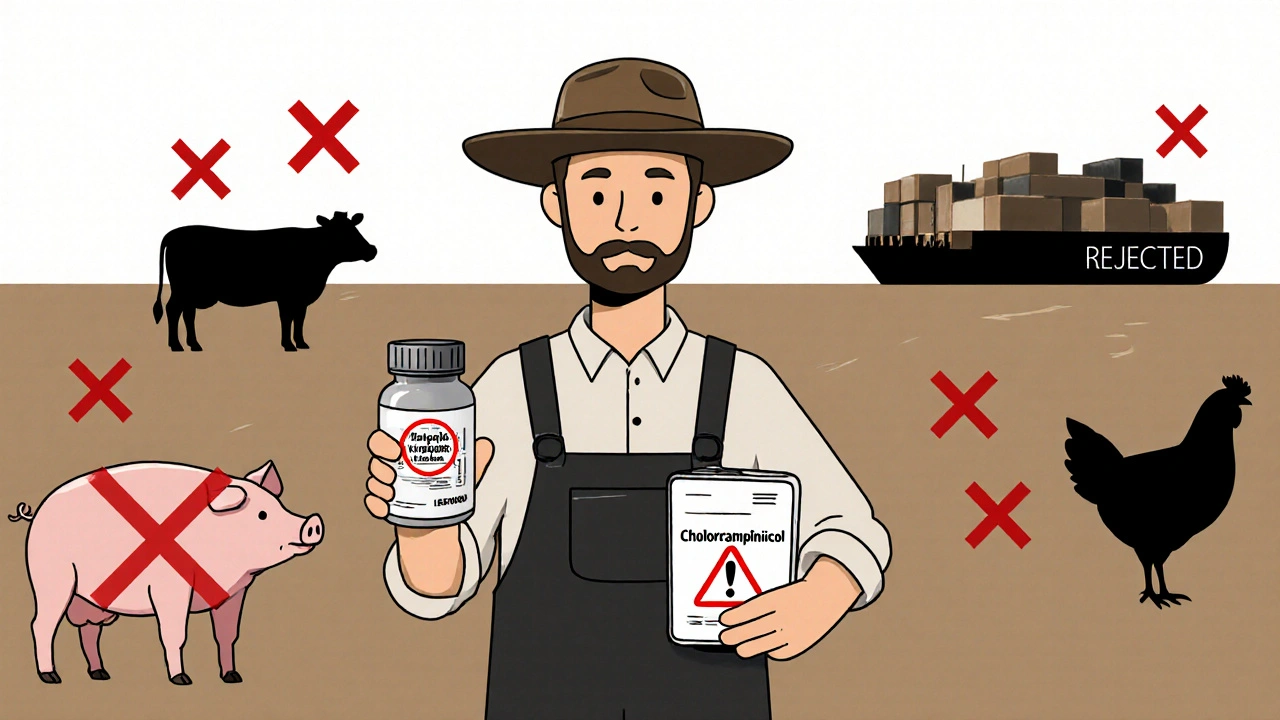
Why Some Still Try to Use It
Despite the bans, chloramphenicol still shows up in illegal veterinary products. In some countries, it’s sold under the counter as a "miracle cure" for livestock. It’s cheap. A single vial costs less than $2. Compare that to $20 for a licensed antibiotic like florfenicol or tilmicosin. For small-scale farmers in developing regions, the cost difference is life-changing.
There’s also a belief that "it’s only a little bit" or "it’s just for one cow." But that mindset ignores the cumulative risk. One farmer’s "little bit" becomes a shipment of contaminated meat. That shipment gets mixed with clean products. Then it’s sold across borders. One person eats it. One person gets sick. And suddenly, it’s not just a local issue-it’s a global public health threat.
Alternatives That Work
There are plenty of safe, approved antibiotics for food animals. Florfenicol, tetracyclines, macrolides, and cephalosporins are all effective against the same infections chloramphenicol once treated. They’re more expensive, yes-but they come with clear withdrawal periods and residue testing protocols.
And it’s not just about antibiotics. Better farm hygiene, vaccination programs, and nutrition reduce the need for drugs altogether. In New Zealand, dairy farms that switched to preventive health plans saw a 40% drop in antibiotic use over five years. The same approach works for pigs and poultry. Healthy animals don’t need strong antibiotics.
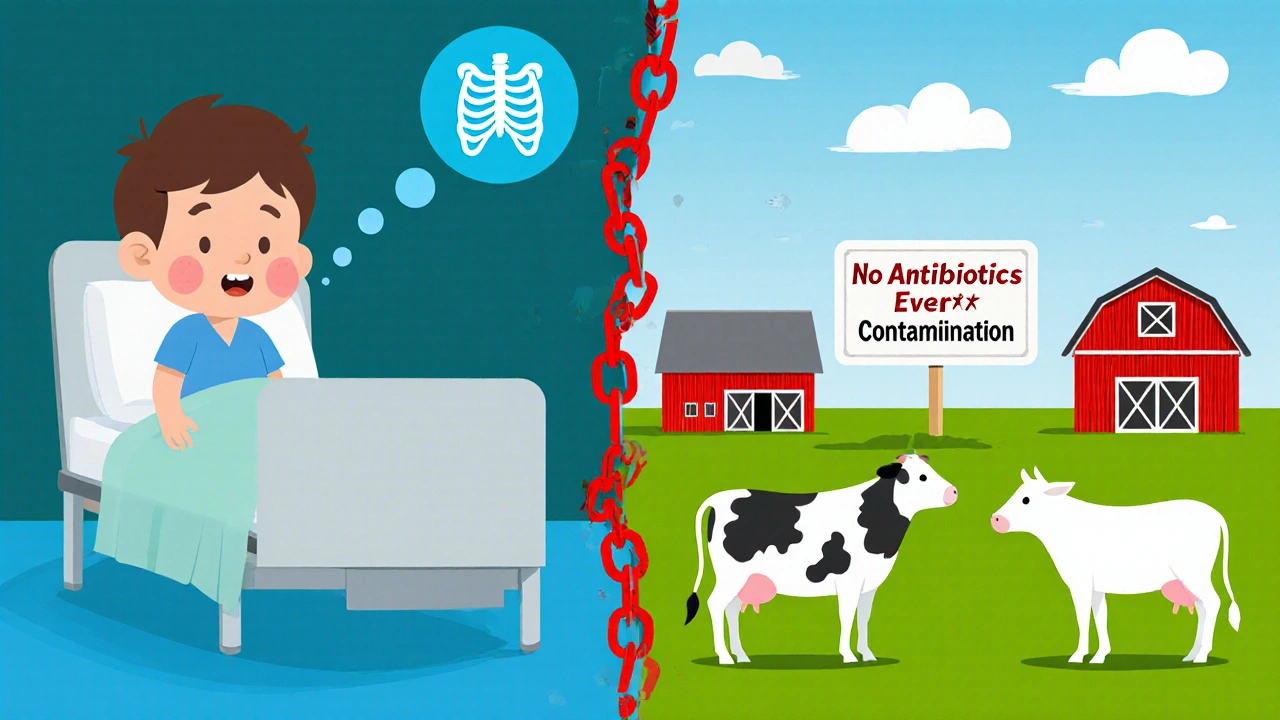
The Real Cost of Cutting Corners
Some argue that banning chloramphenicol hurts small farmers. But the truth is, the real cost comes from getting caught. A single positive test can cost a farm tens of thousands in lost sales, legal fees, and lost trust. Export markets won’t take your product again. Buyers remember contamination. And once you’re on a blacklist, getting back in is nearly impossible.
There’s also the human cost. A child in Europe gets sick from contaminated imported chicken. A mother in the U.S. develops aplastic anemia after eating beef from a farm that used banned drugs. These aren’t hypotheticals. They’ve happened. And every time, the chain of blame leads back to a decision to use a cheap, dangerous drug instead of a safe alternative.
What Farmers Should Do Now
If you raise animals for food, here’s what you need to know:
- Never use chloramphenicol-not even once. Not for a cow, not for a pig, not for a chicken.
- Check your drug labels. Some counterfeit products list chloramphenicol as an ingredient under a different name. If it’s not on your country’s approved list, don’t use it.
- Work with a licensed vet. They know which antibiotics are safe, legal, and effective.
- Keep records. Document every treatment, every dose, every withdrawal period. If you’re audited, paperwork is your protection.
- Invest in prevention. Vaccines, clean housing, and good feed reduce disease. Less disease means less need for antibiotics.
What Consumers Should Know
You don’t need to fear every piece of meat. Most countries have strict testing. But you can make smarter choices:
- Buy from trusted brands that publish their antibiotic use policies.
- Look for certifications like "No Antibiotics Ever" or "Organic"-they prohibit chloramphenicol and other banned drugs.
- Support farms that prioritize animal health over cost-cutting.
Chloramphenicol isn’t a tool. It’s a relic. A dangerous one. The fact that it’s still around in illegal markets shows how much work remains. But the science is clear: no amount is safe. And the world has already decided-food animals should never be treated with it.
Is chloramphenicol banned in all countries?
Most major food-exporting countries, including the U.S., EU, Canada, Australia, Japan, and New Zealand, have banned chloramphenicol for use in food animals. Some low-income countries still allow it, but international buyers reject meat or dairy with any trace of it. So even where it’s legal, it’s practically useless for commercial farming.
Can chloramphenicol be detected in meat after cooking?
Yes. Cooking doesn’t break down chloramphenicol. The molecule is stable at high temperatures, so grilling, boiling, or frying won’t remove it. Testing labs detect residues in raw and cooked samples with equal accuracy. That’s why samples are tested before processing.
Are there any exceptions to the ban?
No. There are no legal exceptions for food-producing animals. Chloramphenicol is still used in humans for life-threatening infections like typhoid fever or bacterial meningitis when no other options exist. But for animals raised for food, zero tolerance means zero exceptions-even in emergencies.
How often are food products tested for chloramphenicol?
In countries like the U.S. and EU, random testing happens at farms, processing plants, and borders. New Zealand tests over 10,000 samples annually. The U.S. FDA tests about 5,000 samples a year. The rate is lower than for other drugs because chloramphenicol is so rare now-but every positive result triggers a full investigation.
What happens to animals that test positive for chloramphenicol?
The entire batch of meat, milk, or eggs is destroyed. The farm is flagged for future testing. In many places, the owner faces fines or loses their license to sell food products. Repeated violations can lead to criminal charges. The goal isn’t punishment-it’s prevention. One positive test can shut down an export market for years.
15 Comments
Holly Dorger
October 31, 2025 AT 13:00 PM
so like… if you eat chicken from a farm that used it even once, you could get sick years later? like… no warning? no test? just boom, your bone marrow quits? that’s terrifying.
Amanda Nicolson
November 1, 2025 AT 22:26 PM
I used to work at a grocery store back in the 90s and we’d get these shipments from Mexico with weird labels-no English, no FDA stamp-and someone told me they’d heard stories about antibiotics in the meat. I never thought it was chloramphenicol, but now I’m sitting here thinking about all the people who ate that stuff and never knew. It’s not just about regulation-it’s about trust. And when trust breaks, people stop buying. And then farms die. And then communities suffer. And it all starts with one cheap vial.
Jackson Olsen
November 3, 2025 AT 19:53 PM
so cooking doesn’t help? that’s wild. i always thought heat killed everything. guess not.
Penny Clark
November 4, 2025 AT 08:58 AM
my grandma used to say 'if it ain't broke, don't fix it'... but this? this is broken. and the cost isn't just money-it's lives. i'm so glad we banned it. 💔
Niki Tiki
November 4, 2025 AT 23:28 PM
USA banned it in 91 and now we’re the cleanest food producers in the world? yeah right. other countries are still dumping this stuff here. we need to shut down imports from places that don’t care about kids
Jim Allen
November 5, 2025 AT 09:55 AM
so we banned a cheap drug because one in a million people might get sick? but we let glyphosate in our bread? lol. priorities.
Nate Girard
November 5, 2025 AT 22:46 PM
the fact that we’ve gone from 'this drug is dangerous' to 'zero tolerance' and now we’re finding ZERO residues in 10,000 samples? That’s not luck. That’s farmers doing the right thing. We should celebrate that. Not just punish the bad actors-lift up the good ones.
Carolyn Kiger
November 7, 2025 AT 15:52 PM
I’m a vet tech and I’ve seen farmers cry because they can’t afford the expensive antibiotics. But then I show them the test results from their neighbors who switched-and their profits went up because buyers paid more. It’s not about cost. It’s about value. And safety is the most valuable thing you can sell.
krishna raut
November 7, 2025 AT 22:35 PM
In India, chloramphenicol is still sold over the counter. But export farms avoid it completely. No one wants their shrimp rejected at EU ports. The market speaks louder than the law.
Katherine Reinarz
November 9, 2025 AT 05:39 AM
what if i just use it on my pet pig that i eat once a year?? it’s not like i’m selling it??
John Kane
November 11, 2025 AT 02:10 AM
That’s exactly the mindset that got us here. One person says 'it’s just for my pig,' another says 'it’s just for my chickens,' and suddenly you’ve got a whole shipment crossing borders with traces no one can see. Then a child in Germany gets sick. Then the whole EU shuts down imports. Then your neighbor’s farm goes under because of one guy’s 'just once.' It’s not personal. It’s systemic. And we’re all in it together.
Callum Breden
November 12, 2025 AT 02:45 AM
The regulatory framework presented here is fundamentally flawed. The zero-tolerance policy is economically irrational and scientifically unjustified. The probabilistic risk of aplastic anemia is statistically negligible compared to the systemic inefficiencies imposed on agricultural supply chains. One must question whether the policy is driven by public health-or by bureaucratic overreach masquerading as precaution.
Mansi Gupta
November 13, 2025 AT 14:29 PM
While I understand the concern for public health, I also see how difficult it is for small farmers in developing nations to access affordable alternatives. Perhaps instead of bans alone, we need more investment in training, subsidies for safe antibiotics, and international support. Safety and equity should not be opposites.
Erin Corcoran
November 15, 2025 AT 09:36 AM
YAS. This is why I only buy 'No Antibiotics Ever' labels. I used to think it was just marketing, but now I know it’s the only way to be sure. Also, my local co-op just started a program where farmers get a bonus for keeping records-so cool. 🙌

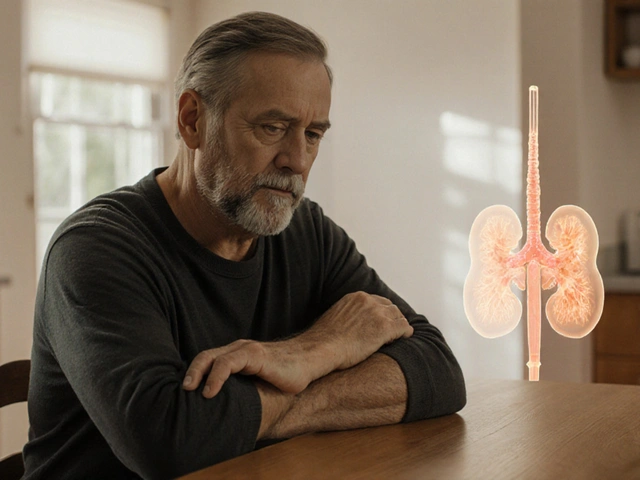
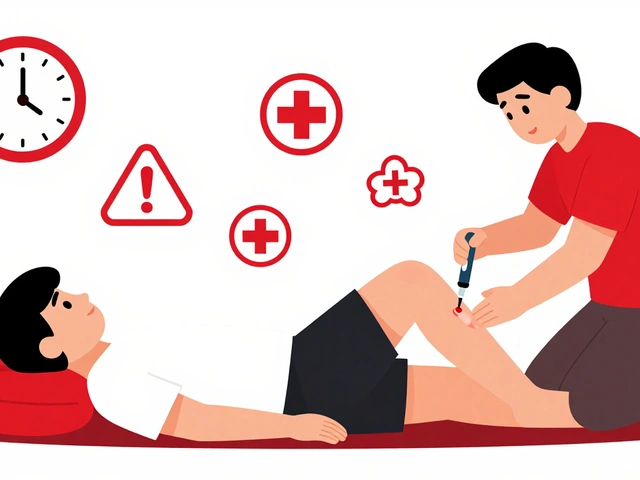
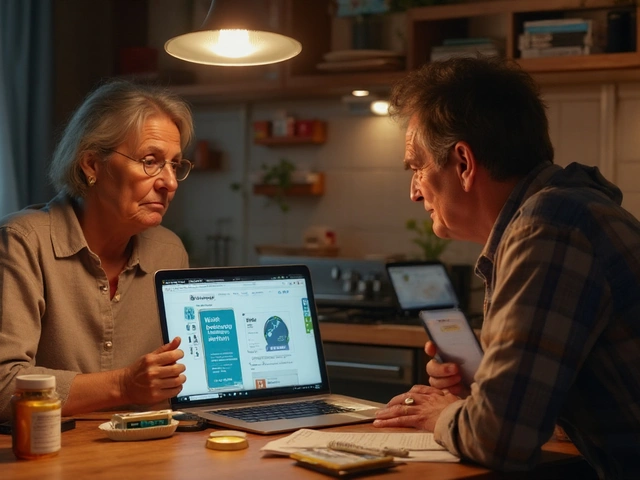
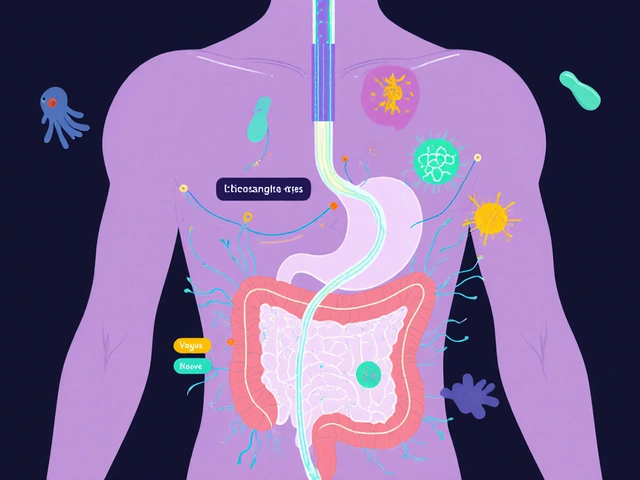

Mike Gordon
October 30, 2025 AT 08:39 AM
Man, I had no idea chloramphenicol could cause aplastic anemia from just trace amounts in food. That’s wild. I always thought antibiotics were just about resistance, not outright blood death.